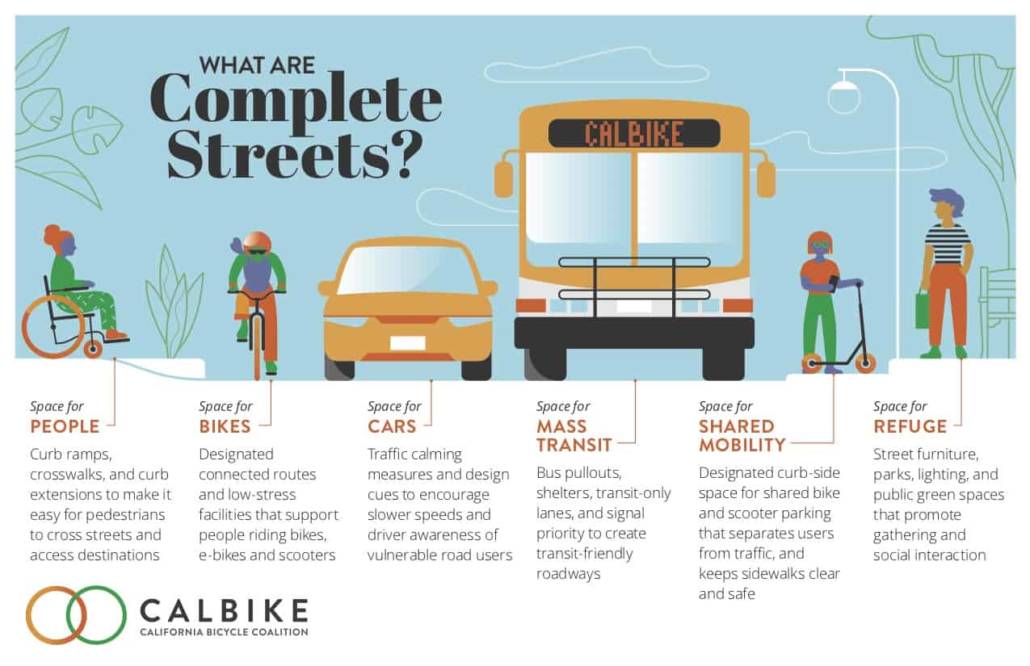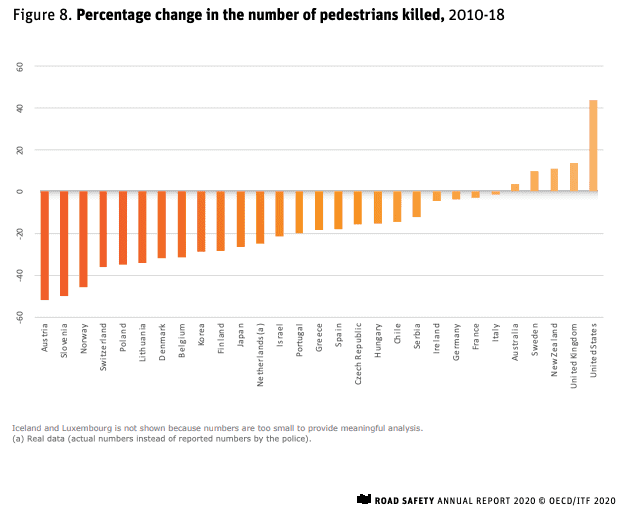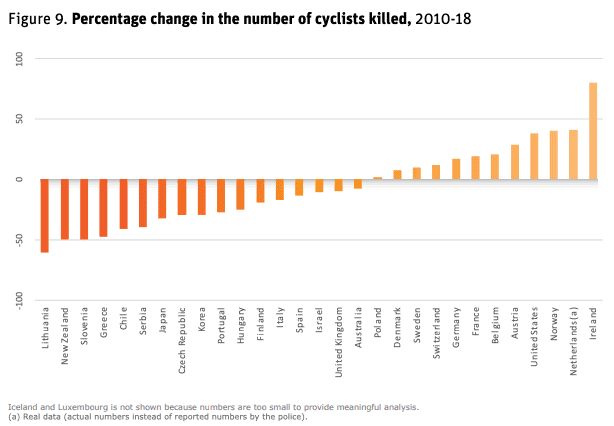Congress has passed, and the president has signed the Infrastructure Investment and Jobs Act. It’s a $1.2 trillion spending package that will invest in aging infrastructure across the US. We share the disappointment of many progressives that this bill still puts too much money toward road-building and not enough toward infrastructure that will help wean us off fossil fuels. Still, there is a lot to like.
Infrastructure Bill basics
Every five years, Congress passes a transportation bill providing five years of funding for transportation projects across the U.S. That bill is wrapped into the $1.2 Trillion Infrastructure Bill. So, out of $645 billion for transportation, $300 billion is a reauthorization of existing funding, while $345 billion is new money on top of expected spending.
Here’s a partial list of what’s in the bill (in billions):
- $110 for roads and bridges
- $39 for transit and rail
- $65 to upgrade broadband infrastructure
- $25 for airport upgrades
- $17 to modernize ports
- $65 for improvements to the electric grid
- $55 for water infrastructure
- $50 for security and resilience in public infrastructure
- $7.5 for electric vehicles
Of course, the question on the minds of active transportation advocates and bike riders is: What’s in it that will make bicycling safer? We have a few preliminary answers to that question, based on reports from and interviews with state and national leaders.
Active transportation funding boost
California has been getting $89 million in active transportation funding from the federal government. That money goes to the state’s Active Transportation Program, which has a total budget of $220 million. The Infrastructure Bill increases active transportation funding by 60%, which gives California an additional $53.4 million to bring the total ATP to more than $270 million.
Of course, this is still woefully inadequate. In the last cycle, the ATP budget covered only a fraction of the projects that applied for funding, leaving many excellent projects unfunded. The governor and the legislature need to settle a dispute about high-speed rail funding and release $500 million in additional ATP monies.
The bill also includes a Complete Streets policy, mandating that planners consider all road users, not just car drivers. However, thanks to advocacy from your CalBike, California already has a Complete Streets policy in place, so this feature won’t have much, if any, impact here.
Rule changes in the bill will dedicate a larger share of funding to regional agencies, which are more likely to support active transportation than state agencies. This funding can also make it easier to meet local match requirements.
Another critical new policy requires states where at least 15% of fatalities are vulnerable road users, such as pedestrians and people on bikes, to dedicate at least 15% of their Highway Safety Improvement Plan funds to measures that improve vulnerable road user safety. In California, 29% of fatalities are vulnerable road users and, in its HSIP implementation plan, spent approximately 24% of its funds on safety for people walking and bicycling. CalBike believes that California’s investment in protecting vulnerable road users should match their share in road fatalities. We will push the state to increase its HSIP spending on biking and walking safety to at least 29%.
New standards for automobile safety
The Infrastructure Bill represents a significant break from past automobile safety policies, which focused on protecting the safety of passengers and defending, literally to the death, the drivers’ rights to go ever faster.
Here are some of the noteworthy safety initiatives in the legislation:
- New cars will come equipped with sensors that prevent drunk driving.
- New headlight standards will require technologies that help reduce fatalities at dusk and after dark.
- Crash testing for front bumpers will include an assessment of safety for people outside the car during a collision. While this doesn’t impose any limits on auto manufacturers who want to make SUVs and trucks designed to kill pedestrians, it will put information in the hands of consumers. Hopefully, people will vote with their dollars and choose safer models.
But wait, there’s more potential funding
CalBike recently spoke with California State Transportation Secretary David S. Kim, and he’s excited to compete for some of the additional funding sources created by the Infrastructure Bill. That includes $200 million a year for the Connecting America’s Active Transportation System Act, which improves connectivity in active transportation networks. We a thrilled at Secretary Kim’s enthusiasm and this opportunity to bring more connected bikeway networks to California communities.
The bill also includes $200 million a year for the Reconnecting Communities pilot program, which seeks to compensate for damage caused by freeway building through BIPOC neighborhoods. Projects that this money could fund include bikeways, pedestrian bridges, and freeway removal.
Chinatowns in many California cities were split by freeway construction. CalBike would love to see I-980 in Oakland removed to make room for badly-needed housing and reconnect the city’s historic Chinatown. However, as Smart Growth America pointed out, the $1B investment in freeway reparations is dwarfed by the bill’s $300B for building new freeways, including a Louisana highway that will bulldoze a Black neighborhood in Shreveport.
As bike advocates, we’ve learned to celebrate incremental progress and fight hard for more. So we appreciate the Infrastructure bill, and CalBike will work hard to get more money for better biking and better communities in California.





